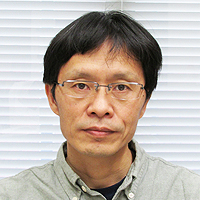Justification of the Principles of Emergency Care for Acute Pneumonia
Published on: 29th April, 2025
The action of modern emergency care for patients with AP, on the one hand, requires a wait-and-see period, which is unacceptable in cases of rapidly progressing inflammation. On the other hand, it uses methods that do not take into account the features of the disease mechanisms. All this creates conditions for an excess of complications and treatment failures. The accumulated facts on this problem indicate the need to revise the principles of treatment. Consequently, the most important initial step in this direction seems to be the correction of professional views in accordance with the classical provisions of medical science.
The Role of Genetic Mutations in the HPGD & SLCO2A1 Genes in Pachydermoperiostosis Syndrome
Published on: 1st May, 2025
Pachydermoperiostosis, also known as Primary Hypertrophic Osteoarthropathy (PHO), is a rare genetic disorder. The three main features are: enlarged fingertips (clubbing), thickened facial skin (pachydermia), and excessive sweating (hyperhidrosis). PHO is characterized by problems with skin and bone growth. Patients with PHO usually have coarse facial features with oily, thick, grooved skin on the face, joint pain, enlarged fingertips and toes, and hyperhidrosis of the hands and feet. Symptoms vary individually; however, men generally present with more severe manifestations. X-rays can help check for features that are not noticeable to the naked eye. There are two genes that are associated with PHO: the HPGD gene, located on the long arm of chromosome 4 at 4q34.1, and the SLCO2A1 gene, located on the long arm of chromosome 3 at 3q22.1 - q22.2. Mutations in the HPGD gene are inherited in an autosomal recessive manner, and the condition is sometimes abbreviated as PHOAR1 or Touraine-Solente-Gole syndrome.
Menstrual Taboos and Child Rights: Death of a Girl during Menarche
Published on: 9th May, 2025
Introduction: Menarche, the onset of a girl's first menstrual cycle, often introduces menstrual taboos in certain eastern cultures. These taboos may manifest as social isolation, dietary restrictions, and exclusion from religious spaces, which can adversely affect health and promote gender inequality.Case history: A 10-year-old girl developed gastroenteritis while in cultural confinement after reaching menarche. Her parents strictly adhered to traditional customs that limited her interactions with the outside world and deprived her of healthy foods. They believed that her fatigue was a result of hormonal changes associated with menarche. Although her condition worsened over four days, they did not seek medical treatment. The child succumbed upon admission. The autopsy revealed extensive cyanosis in the left hand due to multiple thrombotic occlusions of the brachial vein. Microscopic examination confirmed the presence of brachial venous thrombi. The cause of death was determined to be Multiple Organ Dysfunction Syndrome (MODS) as a consequence of hypovolemic shock.Discussion: Key medico-legal issues in this case include parental negligence and failure to provide medical care under Section 308A of the Penal Code, potentially leading to criminal liability for negligence-related death under Section 298. Violations of the child's rights, protected by the Children and Young Persons Ordinance (CYPO) and the Protection of Children's Rights Act, form the legal framework for child protection in Sri Lanka. The ISD has interviewed family members and collected witness statements from neighbors and teachers, referring the case to the police for further investigation and notifying the National Child Protection Authority for an additional inquiry. Additionally, Sri Lanka is a signatory to the United Nations Convention on the Rights of the Child (UNCRC), which guarantees children's fundamental rights.
Computational Simulation of Phase-Molecular Separation-DNA/RNA-Related Function Based on Gene Ontology using Combination of Computational Fluid Dynamics, Machine Learning and Membrane Systems
Published on: 21st May, 2025
Our evaluation and its outcomes/outcomes/hints spotlight that gaining a (having to do with measuring matters with numbers) knowledge of the proteome company in living cells, and its outcomes/consequences/tips for the (introduction and production/ organization of objects) of condensates and MLOs, is a critical assignment that the section separation field wishes to face/address. Our findings that dosage-sensitive (tiny chemical meeting commands interior of living things), insufficient (tiny chemical meeting commands internal of living things) and homologs especially, are overrepresented amongst human LLPS drivers, spotlight furthermore the needed component of preserving the mobile (oversupply/huge quantity) of the (bearing on everyone or issue) DNA/RNA merchandise at a great degree well suited with tightly managed LLPS conduct, to keep away from extreme (diseases/the have a look at of diseases) that unexpected errors in any direction may also cause. In-depth close interest of the records on DNA/RNA concentrations used in the LLPS experiments assisting our excessive self-belief dataset of human driver DNA/RNA s laid the uncertainties related with defining the frame-shape-related meaningful ranges of this essential restriction/guiding principle that leads and controls condensate (introduction and production/ organization of items), and recommended how those uncertainties can be lessened (something awful) and (ultimately) shortened.Graphical abstract: Computational Simulation of Phase-Molecular Separation-DNA/RNA-Related Function Based on Gene Ontology Using Combination of Computational Fluid Dynamics, Machine Learning and Membrane Systems.
Browse by Subjects
Chemistry Group Journals
Pharma Group Journals
Mathematics & Physics Group Journals
Clinical Group Journals
- Archives of Food and Nutritional Science
- Annals of Dermatological Research
- International Journal of Clinical Microbiology and Biochemical Technology
- Journal of Advanced Pediatrics and Child Health
- Journal of Pulmonology and Respiratory Research
- Insights in Clinical and Cellular Immunology
- International Journal of Clinical Anesthesia and Research
- Journal of Clinical Intensive Care and Medicine
- Journal of Clinical, Medical and Experimental Images
- Journal of Neuroscience and Neurological Disorders
- Insights in Veterinary Science
- Journal of Stem Cell Therapy and Transplantation
- Archives of Asthma, Allergy and Immunology
- Journal of Child, Adult Vaccines and Immunology
- Archives of Cancer Science and Therapy
- Clinical Journal of Nursing Care and Practice
- Annals of Clinical Gastroenterology and Hepatology
- Journal of Hematology and Clinical Research
- Archives of Pathology and Clinical Research
- Annals of Clinical Hypertension
- Journal of Oral Health and Craniofacial Science
- International Journal of Clinical and Experimental Ophthalmology
- Journal of Radiology and Oncology
- Journal of Clinical Nephrology
- Archives of Clinical and Experimental Orthopaedics
- International Journal of Bone Marrow Research
- International Journal of Clinical Virology
- New Insights in Obesity: Genetics and Beyond
- Advanced Treatments in ENT Disorders
- Journal of Clinical Advances in Dentistry
- Insights on the Depression and Anxiety
- Heighpubs Otolaryngology and Rhinology
- Clinical Journal of Obstetrics and Gynecology
- Archives of Surgery and Clinical Research




